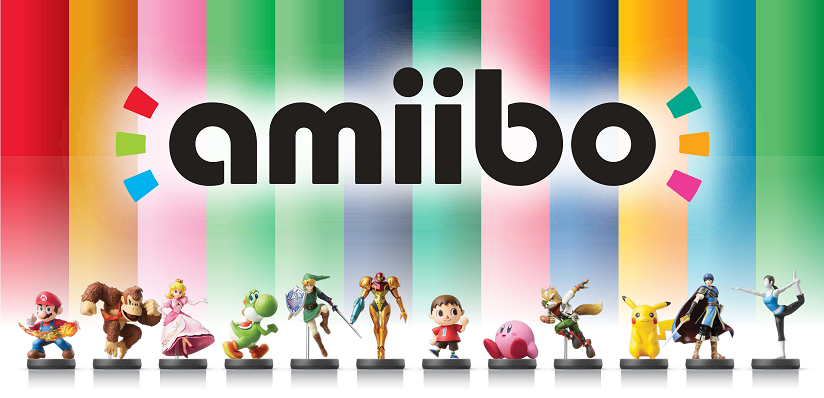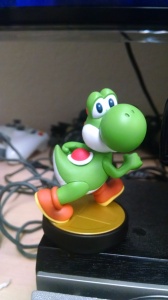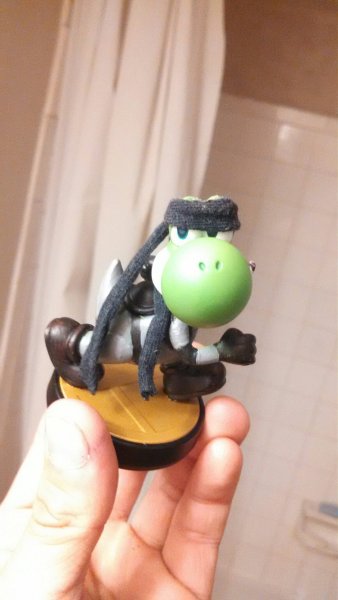The Sudden Fandom of Amiibo; Or, “I’m Really Feeling It!”


A couple months ago I found myself in the best version of a familiar scenario: in line at my local game store early on a long-awaited launch day. I was picking up Super Smash Bros. For Wii U for the Game Lab in what was expected to be the least eventful part of my day, in which I had one of the first opportunities to flex my event-planning muscles in the name of my burgeoning career in video games. After an odd moment with unexpected tensions over who would be picking up an adapter for the ever-popular Gamecube controllers (the Lab got ours easily enough), off I went to start unlocking characters with a few fellow graduate students, all in the name of science and community-building. I had also come bearing a Yoshi Amiibo; Yoshi’s just so adorable, and I was curious about how these near-field-communication enabled figurines worked anyway. The Lab’s Smash event went swimmingly, and between a myriad of control options and a now quite talented red Yoshi named Percival saved onto our Amiibo, the Game Lab has a nice Smash setup for further play and research.
Typically work in the Lab leans towards researching game design, and for that, Smash has much to offer. It’s a study in beautifully rich learning curves and depth, as well as tweaking and fine-tuning a core concept into an experience that is maniacally fun over a decade after its first iteration and that breathes new life into even older characters, feats at which Nintendo’s development teams have proven to be particularly adept. Oddly enough though, my ongoing fascination with the latest Smash release has extended beyond its virtual limits into a game of a different sort.
Just a night after our Smash event, I came across an article from gaming website Kotaku that listed, discussed, and investigated soaring prices for the Gamecube controller adapters. Apparently an overarching “they,” the usual names in gaming retail, had sold out. I mostly found this interesting due to my own brief problems with but ultimately good fortune in picking one up, so we continued our Smash-capades without thinking too much of the situation.
Indeed, my labmate and I were having a ball training our Amiibo avatar Percival into a recklessly dangerous fighter, and with a more cheery and rather nice-looking Yoshi statue adorning the Game Lab, I started seeing the appeal of these Amiibo. They aren’t really that expensive, after all. They look so nice. And hey, they can make for a good time in-game too! I wanted to be careful, though; my gaming backlog (a burden I bear not alone) reminds me that I am susceptible to the slippery combination between a collector’s streak, a wallet that is slightly more flexible than my time, and a penchant for hyped games and the colorful things related to them. But what would be the harm in picking up a few Amiibo? I’ve been playing so much Fire Emblem and Animal Crossing in the last year, so just Marth and the Villager would do.

And that’s where the rabbit hole begins. Couldn’t find them locally, so I looked online. But… sold out? Ah, here’s some listings, yet… The Gamecube controller adapter tale had been woven again as third-party sellers marked up Amiibo (Especially the very rare Marth, Villager, and Wii Fit Trainer. Joke’s on me, as it turned out.) to upwards of four times their MSRP. Wowzers. Suddenly the prospect of having a few more cute statues around the Lab became a point of inquiry: Just what in blazes is going on with Amiibo?

As it turns out, there is a whole community (which is, like many of the internet, highly active on Reddit) dedicated to the Amiibo collector’s market. A subsection of that community creates custom Amiibo that compound value atop figures already in high demand. Others have taken to scalping (a loaded term that is likely misleading) or becoming frustrated by scalping, and as further sets, or waves, of Amiibo are released, scalping via carefully timed bulk preorders has intensified, along with anger, upset, and even malice. (That particular story has since been debunked. Regardless, anyone else notice that list of “hatred and disdain” only consists of female characters?)
However, much of the chatter about Amiibo boils down to collaborative guesswork around a shared passion. Many have been wondering what Nintendo’s distribution model or even aim is here and with the controller adapters, as it doesn’t seem profitable to have demand consistently outstrip supply. The most recent Nintendo Direct (i.e. the company’s video broadcast series for news and announcements) detailing the North American release of the newest edition of the 3DS handheld console, the fourth Smash wave and new line of Amiibo, and numerous upcoming games, has sparked further disappointment amongst the most vocal of Nintendo’s North American fanbase as the region misses out on console versions seen almost everywhere else globally and the more desirable preorder opportunities that remain sell out nearly instantly.
Even if Nintendo’s business decisions are unclear (although there are some ideas floating around), the Amiibo craze has interesting things to show about the people who play and love games. Games, particularly Japanese ones in my experience, spawn plenty of merch, though usually in collector’s editions and limited batches. Yet, those who collect these artifacts seem to do so for the love of the game– both the game inspiring the merch and the game of finding, procuring, and displaying those pieces. The communities that arise out of that love not only provide means of participating through distributed knowledge, cognition, and work, like in many multiplayer games, but they also ideally provide safe spaces for members to share the stories and memories behind their collections. In the case of Amiibos (and their community of Amiigos/Amiibros/Amiibras), Nintendo’s oddly distributed figures have created a microcosm of the good— and some of the ills (as a warning, this video and its comments are not the most pleasant and are in fact riddled with offensive content)– of today’s gaming communities, which is awesome in a thoroughly left-field, Nintendo kind of way.
And thanks to this community’s outcroppings, my own preorders of Ike, King Dedede, Toon Link, Sonic, and a suddenly restocked Pit (!) will be ready to pick up pretty soon. Cheers, Amiigos!

